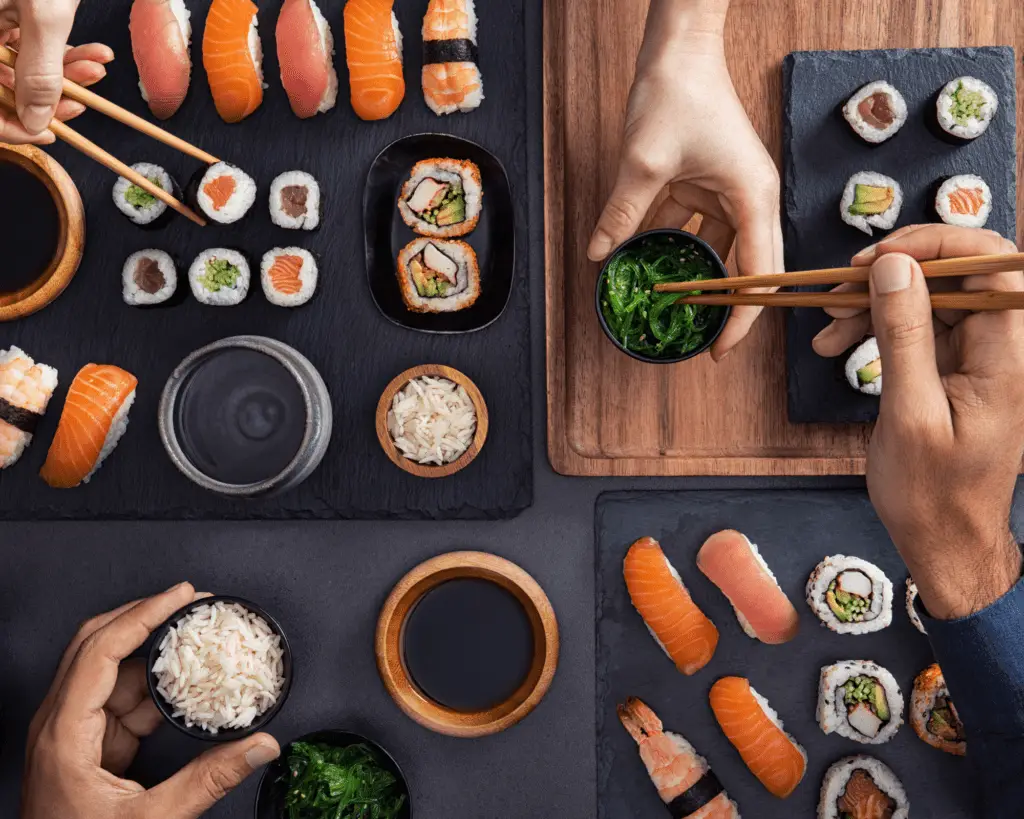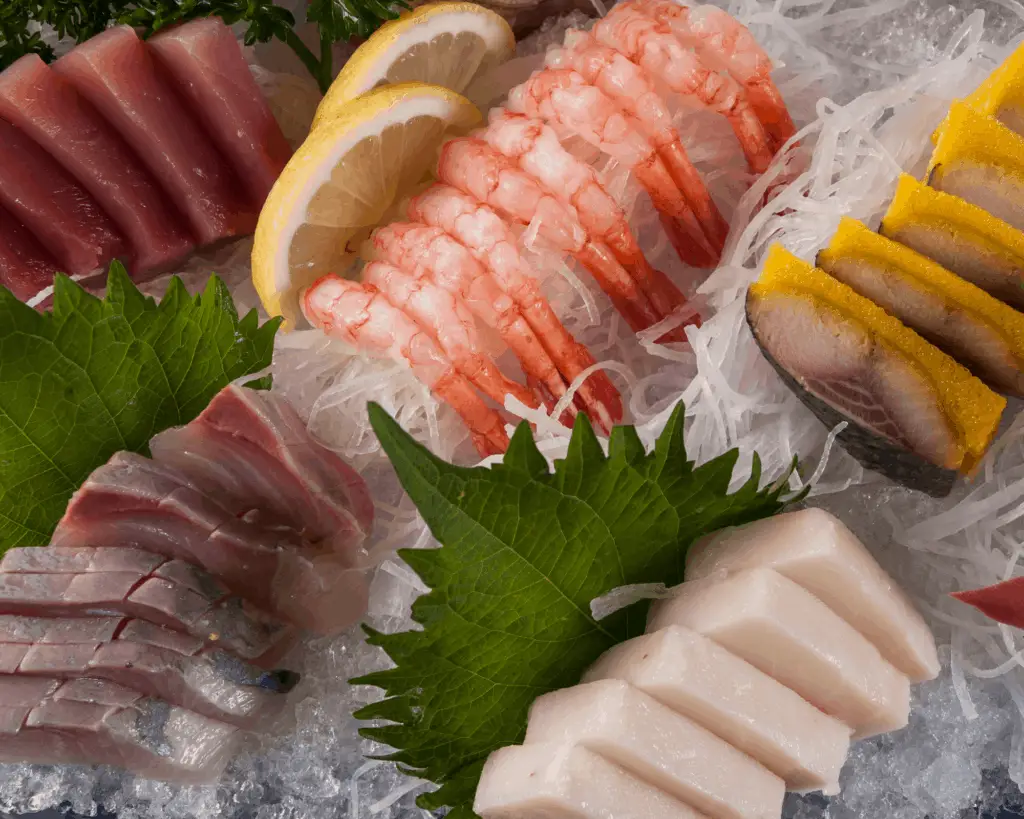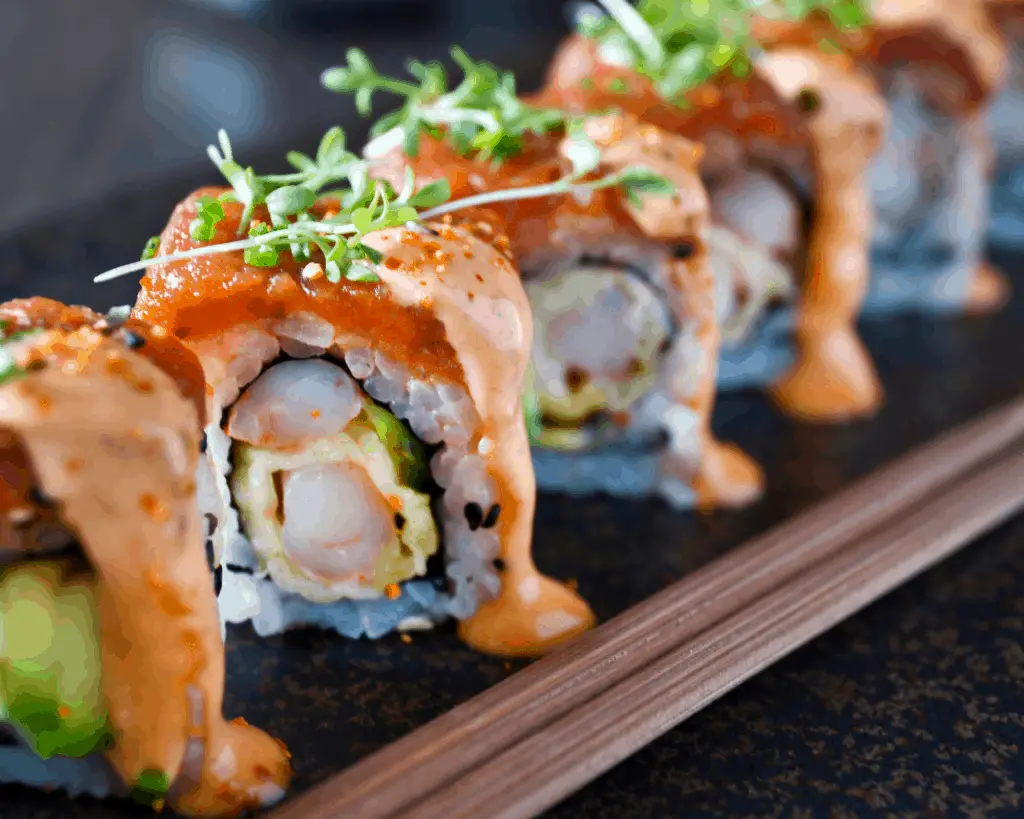There is no doubt that sashimi and sushi are part of Japanese cuisine. Often, people confuse sashimi as a type of sushi, but we are here to set the record straight.
What is the difference between sashimi and sushi? The main difference between sashimi and sushi is that sushi is made with rice, while sashimi is not. Sushi can be made with either cooked or uncooked seafood, while sashimi must always be made with raw seafood.


In Japan, people never ask this question. There is never any confusion between the two dishes. When shopping at a Japanese supermarket, you get sashimi at the fish counter and sushi at the deli counter. When eating out in Japan, sashimi is usually part of a bigger meal, while people eat sushi as a meal by itself.
The Difference in Sashimi and Sushi
Some people think sashimi is a type of sushi, but it is not. Sashimi is served as one item, while sushi is a combination of ingredients, including rice.
When you are craving fresh, Japanese seafood, you can choose to order either sashimi and sushi.
Or maybe you prefer to order both!
More About Sashimi

Sashimi translates into the phrase “pierced fish.” While sashimi is often consumed as raw fish, it is not always raw or even fish. Sashimi served raw usually has a higher mineral and vitamin count than cooked pieces and uses various seafood.
Most Common Types of Sashimi (served raw)
- Salmon
- Tuna
- Spanish Mackerel
- Red Snapper
- Squid
- Round or Whelk Clam
- Scallop
- Sea Urchin
Another type of sashimi is Tataki, where an Itamae (a sushi chef) sears the ingredient, cooking the outside quickly while leaving the inside raw. Sushi chefs typically lightly poach shrimp and octopus sashimi while grilling eel sashimi. People do not eat raw crab meat.
Other Types of Sashimi (served cooked)
- Tiger Shrimp
- Octopus
- BBQ Freshwater Eel
- Crab Meat
More About Sushi

The translation of sushi is “sour rice.” Making the perfect sushi rice is a process; it is more flavorful than plain white rice. Learn how to make sushi rice at home here “how to make sushi rice in a rice cooker“. If you have any doubts about the amount of vinegar to use, read this article here “sushi rice how much vinegar”.
If you want recommendations on which sushi rolls to try, the following are on our must-eat list: Tuna Roll, California Roll, Rainbow Roll, Philadelphia Roll, and Dragon Roll. Learn more about these rolls and discover which ones are good for your health here.
The word maki means “roll” in Japanese, and the ingredients are rolled in nori. Many sushi rolls combine numerous flavours and are served in various forms on Japanese menus. Let’s talk about the different types of sushi.
Temaki
Tamaki is sushi rolled by hand into a cone shape. People eat temaki with their hands; it is a different shape.
Maki
Maki is a sushi roll where the rice is inside, and the nori is outside. This type of roll is what people mostly think of when talking about sushi.
Uramaki

Uramaki is a roll that has rice on the outside of the seaweed. This type is an ‘inside out’ roll. Uramaki or Maki rolls are also popularly made in a tempura style. To learn more about tempura, click here “Shrimp roll vs shrimp tempura”. If you decide to make shrimp tempura, check out our “best shrimp for tempura” here.
Nigiri
Nigiri is a type of sushi since it is served on seasoned rice. Even though it most resembles sashimi because it doesn’t contain seaweed, it is part of the sushi category since it comes with rice.
Sushi Bowls
Sushi bowls, or poke bowls, are gaining in popularity these days around the world. The word poke means “to slice or cut.” This dish contains a seafood or tofu mixture over rice with veggies and Asian sauces.
What Are Some Similarities Between Sashimi and Sushi?
Although sashimi and sushi are different dishes, they have some similarities.
- They come with wasabi (a spicy green paste), gari (pickled ginger), and soy sauce on the side.
- People eat both dishes with chopsticks.
- When eating raw seafood, it is crucial to buy only fresh products. Purchase all seafood from a fishmonger and look for signs of freshness, including firm flesh, moist skin, and a fresh smell like the sea.
Remember the Difference Between Sashimi and Sushi
One way to remember the difference between these types of cuisine is by using an analogy. When referring to Mexican food, shredded beef or pork is not the same as a taco. Nonetheless, shredded beef or pork can be an ingredient in a taco. In Japanese cuisine, sashimi is not the same as sushi; however, components of sashimi are in sushi.